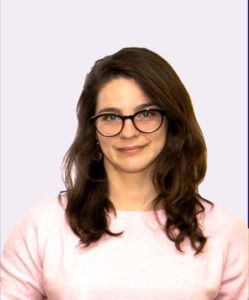Juliana Jaramillo-Fernandez
Phonons and photons in thermo-functional materials for passive cooling
Juliana Jaramillo-Fernandez1,2 and Clivia M. Sotomayor-Torres1,3
- Catalan Institute of Nanoscience and Nanotechnology (ICN2), CSIC and BIST, Campus UAB, Edifici ICN2, 08193 Bellaterra, Spain;
- Universidad Autónoma de Barcelona, 08010 Barcelona, Spain.
- ICREA, Pg. Lluís Companys 23, 08010 Barcelona, Spain
Abstract:
Phonons, the quasi-particles carriers of heat and sound, are involved in practically all kind of mechanical, optical, and thermal phenomena. Using modern nano and microfabrication techniques, phonons can be engineered to interact resonantly with photons to reveal new properties with potential impact on society. This is the case of radiative cooling, which involves decreasing the temperature of a body by emitting infrared radiation, without using electricity or any other kind of extra energy input. Radiative cooling technologies constitute attractive solutions to reduce the intensive electricity consumption of modern cooling technologies, and they are of particular interest in views of the increasing cooling needs due to global warming.
In this talk, we will provide an introduction to the state-of-the art and a detailed summary of recent progress in this research field. The recent work in our institute on self-assembled 2D thermofuctional materials will be presented and remaining questions and challenges for real-world applications will be discussed. The major achievements will be summarised and trends in nanophononics and nanophotonics relevant to passive cooling illustrated. Finally, an insight into the possibilities of using these emerging technologies at very-large scale will be given, where they could have a very positive environmental impact.
[1] Juliana Jaramillo-Fernandez,* Guy L. Whitworth, Jose Angel Pariente, Alvaro Blanco,
Pedro D. Garcia, Cefe Lopez, and Clivia M. Sotomayor-Torres. “A Self‐Assembled 2D Thermofunctional Material for Radiative Cooling.” Small (2019): 1905290. DOI: 10.1002/smll.201905290
* This work has been carried out in collaboration with P.D. Garcia, G. L. Whitworth, N. Kehagias, A. Francone and our collaborators from the Materials Science Factory at Instituto de Ciencia de Materiales de Madrid (ICMM) C. Lopez, J. A. Pariente and A.Blanco.
Bio:
 Dr. Juliana Jaramillo Fernandez is a Marie Skłodowska-Curie COFUND PSPHERE- postdoctoral fellow at the Catalan Institute of Nanoscience and Nanotechnology, Barcelona, Spain. Previously, she was a postdoctoral researcher at the Royal Institute of Technology (KTH) in Stockholm. She obtained her PhD from CENTRALESUPÉLEC (France) in 2015 with a thesis on Thermal Nanosciences and M.Sc in Materials Science at Université de Limoges (France) in 2011. The same year, Juliana got her Bachelor degree in Engineering Physics at EAFIT University in Colombia. Currently, she is using her expertise on micro and nanoscale heat transfer to develop sustainable thermal management solutions that can significantly reduce the current high energy footprint of modern thermoregulation technologies. She is developing new passive systems that only make use of non-toxic materials, while developing further understanding on thermal energy transport via surface phonon polaritons. Her research focuses on phonon engineering, heat transfer in semiconductor nanostructures, tailoring physical properties of low-dimensional materials and controlling thermal transport within nanostructures. Earlier this year, she was conferred the Best Postdoc Paper Award 2018-2019, on the occasion of the International Day of Women and Girls in Sciences at the Catalan Institute of Nanocience and Nanotechnology for her work on thermofunctional materials for radiative cooling. Moreover, she was honored with The Collider Tech award in 2019 by the Mobile World Capital BCN, a prize for research projects selected to create disruptive tech start-ups.
Dr. Juliana Jaramillo Fernandez is a Marie Skłodowska-Curie COFUND PSPHERE- postdoctoral fellow at the Catalan Institute of Nanoscience and Nanotechnology, Barcelona, Spain. Previously, she was a postdoctoral researcher at the Royal Institute of Technology (KTH) in Stockholm. She obtained her PhD from CENTRALESUPÉLEC (France) in 2015 with a thesis on Thermal Nanosciences and M.Sc in Materials Science at Université de Limoges (France) in 2011. The same year, Juliana got her Bachelor degree in Engineering Physics at EAFIT University in Colombia. Currently, she is using her expertise on micro and nanoscale heat transfer to develop sustainable thermal management solutions that can significantly reduce the current high energy footprint of modern thermoregulation technologies. She is developing new passive systems that only make use of non-toxic materials, while developing further understanding on thermal energy transport via surface phonon polaritons. Her research focuses on phonon engineering, heat transfer in semiconductor nanostructures, tailoring physical properties of low-dimensional materials and controlling thermal transport within nanostructures. Earlier this year, she was conferred the Best Postdoc Paper Award 2018-2019, on the occasion of the International Day of Women and Girls in Sciences at the Catalan Institute of Nanocience and Nanotechnology for her work on thermofunctional materials for radiative cooling. Moreover, she was honored with The Collider Tech award in 2019 by the Mobile World Capital BCN, a prize for research projects selected to create disruptive tech start-ups.
